Philip Webb lived from 1831 to 1915 and was trained as an architect at the onset of the Arts and Crafts movement of the late 1800s. His collaboration with William Morris, one of the primary design thinkers and creators of the era, has resulted in the production of some of his most significant work. His Table Glasses for instance, were designed for Red House, a home designed by Webb for Morris and his wife Jane which was meant to epitomize the ideas of the Arts and Crafts movement. Namely, a return to hand-made craft which provided satisfaction to the maker, as opposed to the trend to further industrialize and “de-humanize” objects.


Architectural Drawings, 1859, Philip Webb
Like Webb, Morris himself was inspired by other thinkers, primarily those of the Victorian era, John Ruskin and Augustus Pugin. John Ruskin was one of the most influential Victorian opinions who discussed the process of making objects, specifically in terms of the idea of the division of labor. In his view, through the separation of design and production, the relationship to the object was lost. Pugin had a similar perspective in his harkening back to medieval practices of the maker seeing and object through to completion, but also specifically viewed Gothic as the most moral design style.
Having understood the works of Ruskin and Pugin, William Morris formulated his own thoughts regarding design. Rather than embracing the increasing industrialization of the age, Morris argued for increased handmade production as well as the use of high quality materials to be fit for everyday life. Similar to Ruskin, he believed this would create a more satisfactory connection between the design and production process, perhaps stemmed from his fascination with crafts of the medieval ages.
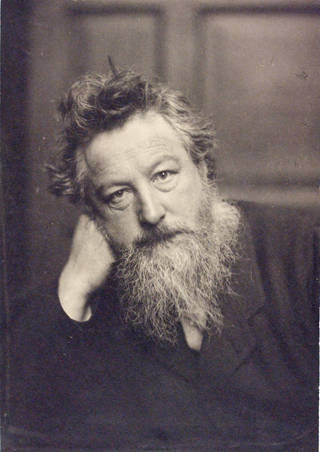
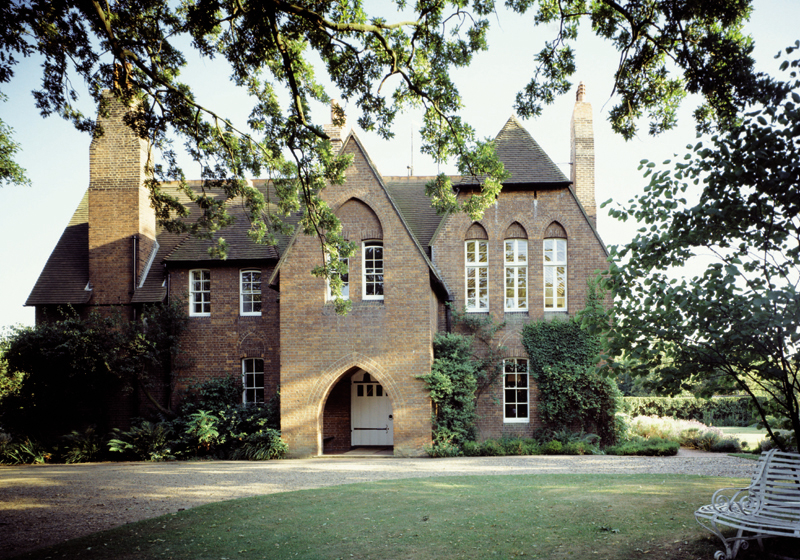
Photograph of William Morris, 1884, Frederick Hollyer + Photograph of Red House, Completed 1860
Morris met Philip Webb in 1856 during his time at the office of George Edmund Street, a Neo-Gothic architect. Like many of the Arts and Crafts movement, Webb was an architect as well as a designer of furniture, tableware, tapestries, wallpaper and tiles. When Webb opened his own architectural practice in 1859, his first commission was from that of William Morris. Red House, completed in 1860, is located in Bexleyheath, Kent and was designed as a home for Morris and his wife, as well as a sort of communal studio space. Just by looking at the exterior of the house, you can tell the style is not one of high ornamentation. Rather, it is inspired by a kind of romantic medieval vision combined with sturdy quality materials and hint of stylized Gothic elements. With Webb as a lead designer, Morris, Marshall, Faulkner & Co. was established in 1861 as an interior decorating company.

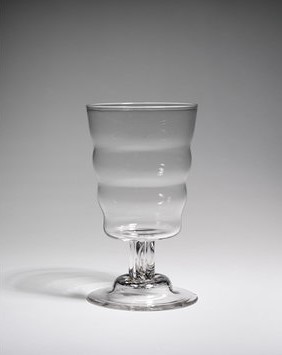

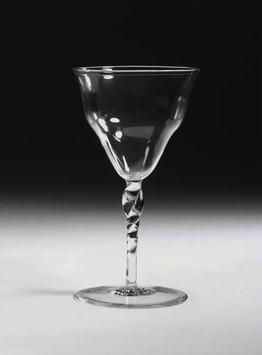
Table Glasses, After 1862, Probably designed by Philip Webb + made by James Powell & Sons
The Table Glasses above were inspired by the design and ideologies behind the creation of Red House. This set of glasses were produced after 1862, following the completion of Red House, but are noted to “probably” be designed by Philip Webb. In 1860 enamel painted glassware were produced for Red House which no longer exist, so this set is thought to be the simplified versions which were sold through Morris, Faulkner & Co.
The set includes a wine glass, champagne glass, goblet and tumbler composed of glass which is part hand blown and part mold blown. While probably utilizing more manufactured processes than Morris preferred, the Table Glasses still retain a design that speaks to the Arts and Crafts movement. Being part hand blown glass demonstrates some sense of craftsmanship or skill in the production and delicate simplified forms composing the glasses evokes a sense of humbleness that Victorian design may lack in its heavy ornamentation. Here, the ornament seems to be formed by the beauty of the material itself which invites us to want to hold, feel and use the object.
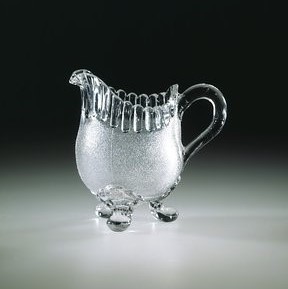
Cream Jug, 1875, Sowerby Ellison Glassworks
When compared to the Cream Jug of Sowerby Ellison Glassworks, there is a notable difference in the overall design as well as the mode of production. Thinkers and designers like Morris or Webb often rejected the increased mechanization of product production, as this would result in a loss of detail and soul from an object. Yet, products could be made faster and costs could be lowered through this method, which was even realized by Morris who began to realize the cost and time it would take to make his ideal items. One method exemplified by this Victorian style jug is press molding of glass that was used to make it. Press molding had spread to Britain in the 1830s, contributing to the concept of the deskilling of labor where each person had one task that required no particular skill in completing. The style of the jug itself features a variety of textural elements and fanciful details, including the pebbled textured body as well as swirled and scalloped edges reminiscent of a French Revival style. The ornamentation, although produced by the molding of the material itself, is much more ostentatious when compared to the stripped-down design of Philip Webb.
When looking at the Tables Glasses as well as the concepts that sparked the Arts and Crafts movement, it is amazing to still see the parallels in consumer behavior and production movements today. Just as Morris focused on the beauty of the handmade and connecting the maker to the object, we are seeing consumers increasingly interested in more unique or original goods. Although, these may come at a higher cost, as Morris had discovered through his effort to make high quality design for the greatest amount of people. In reality, at the time only the wealthy could afford those items.
Combined with the sense of social justice and sustainability practices, people are flocking to sites like Etsy and increasingly searching through second hand shops in order to demonstrate their own originality while denounce fast production methods, such as fast fashion, which often cause damage to workers as well as the environment. Not far off from what inspired the Arts and Crafts movement.

Sources
V&A British Galleries
Arts and Crafts: an introduction – V&A
Introducing William Morris – V&A
Wine Glass – V&A Collections
Tumbler – V&A Collections
Goblet – V&A Collections
Champagne glass – V&A Collections
Red House, in Architectural Excellence: 500 Iconic Buildings, edited by Paul Cattermole
Philip Webb: a new vision for domestic space – V&A
Cream Jug – V&A Collections
Images
Photograph of Red House – in Architectural Excellence: 500 iconic Buildings, edited by Paul Cattermole
